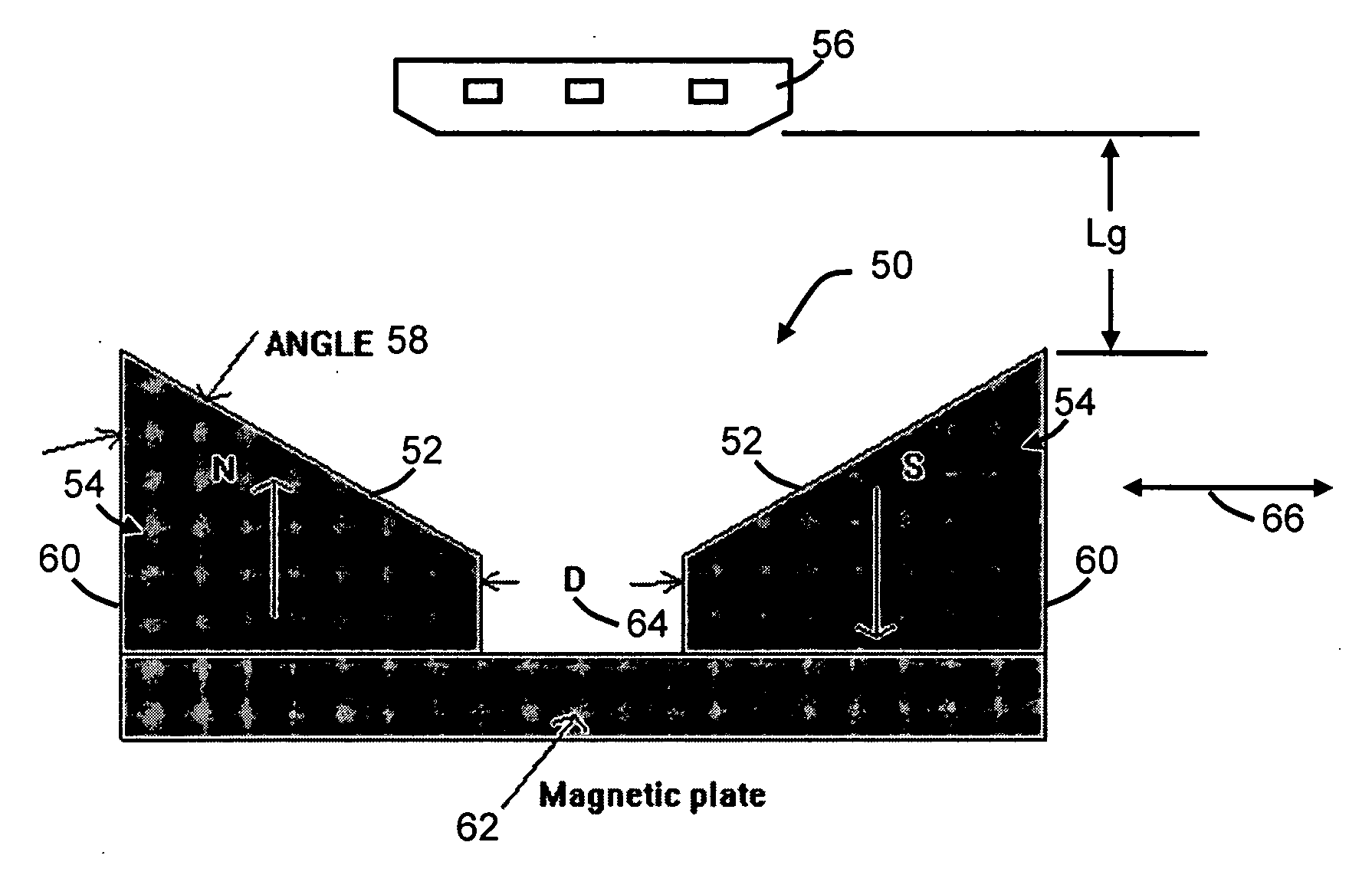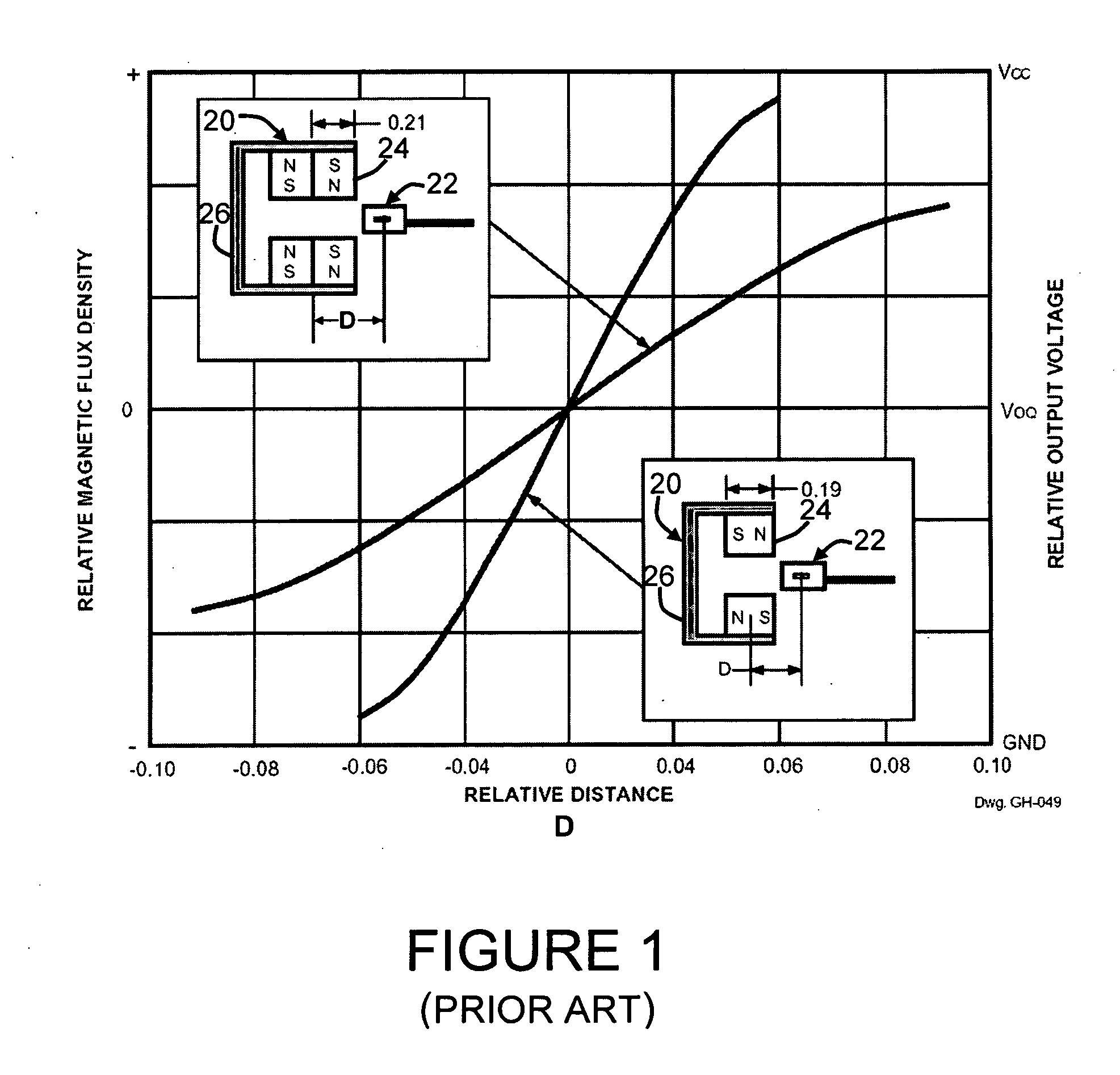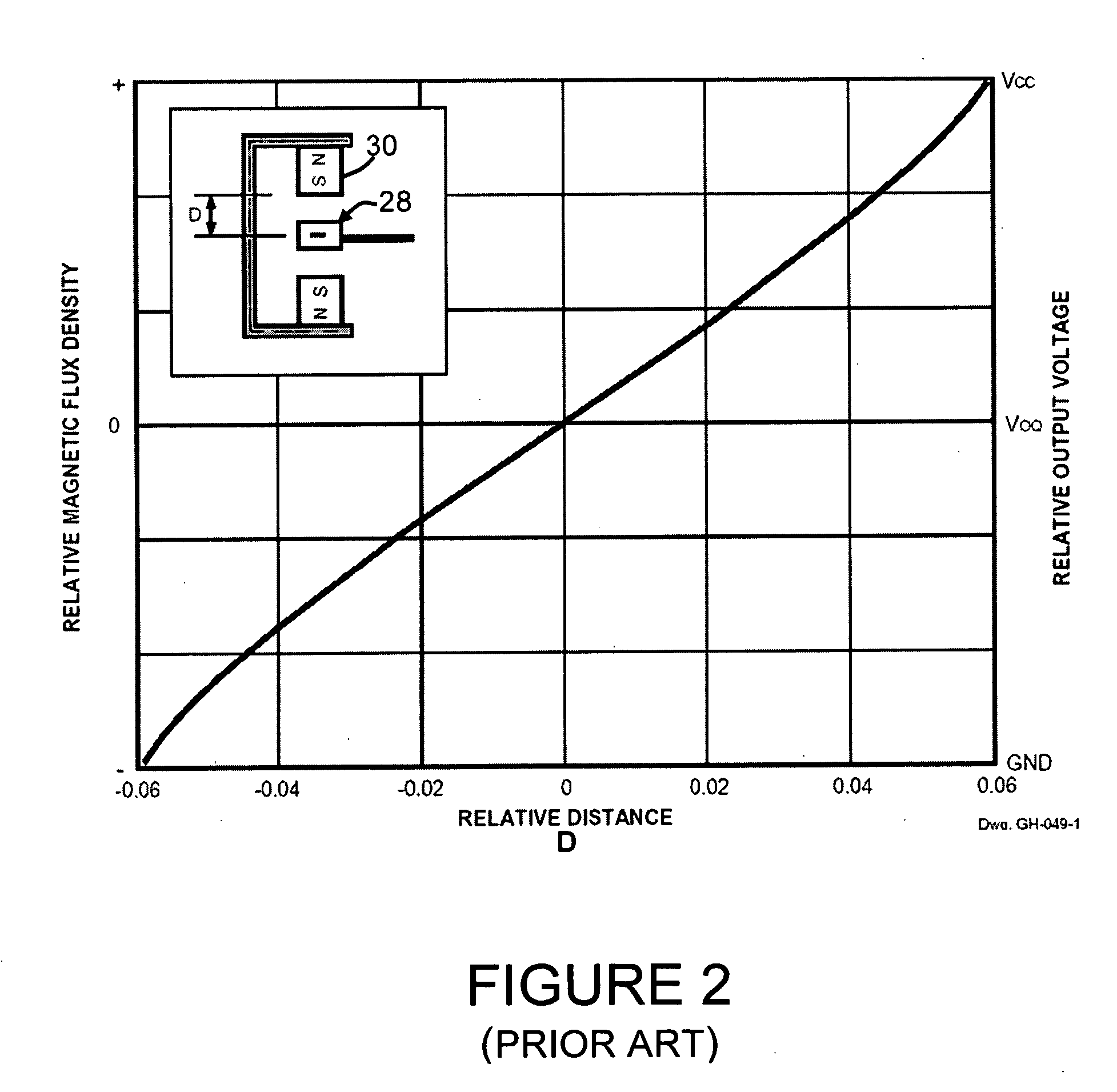Position sensor utilizing a linear hall-effect sensor
a technology of hall-effect sensor and position sensor, which is applied in the field of position sensors, can solve problems affecting the overall performance of the sensor, and achieve the effect of improving the control and linearity of the flux density versus stroke characteristics
- Summary
- Abstract
- Description
- Claims
- Application Information
AI Technical Summary
Benefits of technology
Problems solved by technology
Method used
Image
Examples
Embodiment Construction
[0026] Referring now to FIG. 4, a position sensor in accordance with the present invention is illustrated. In particular there is shown a cross section of a magnetic field assembly 50 of a position sensor utilizing a linear Hall-effect sensor which provides improved linearity in accordance with the present invention. As can be seen from FIG. 4, the sides 52 (of the magnets 54) which face the Hall-effect sensor 56 are formed at an angle 58 with respect to the vertical sides 60 of the magnets 54. The angle 58 is preferably and acute angle relative to the vertical sides 60. Also, the magnets 54 are positioned on magnetic plate 62 and spaced apart by a separation distance D (64). The direction of motion of the magnetic field assembly 50 is shown by arrow 66.
[0027]FIG. 5 depicts one example of the utilization of the illustrated embodiment of the position sensor of the present invention, where the magnet assembly 50 is attached to a hub 68, which, in turn, is put on a shaft of a motion d...
PUM
 Login to View More
Login to View More Abstract
Description
Claims
Application Information
 Login to View More
Login to View More - R&D
- Intellectual Property
- Life Sciences
- Materials
- Tech Scout
- Unparalleled Data Quality
- Higher Quality Content
- 60% Fewer Hallucinations
Browse by: Latest US Patents, China's latest patents, Technical Efficacy Thesaurus, Application Domain, Technology Topic, Popular Technical Reports.
© 2025 PatSnap. All rights reserved.Legal|Privacy policy|Modern Slavery Act Transparency Statement|Sitemap|About US| Contact US: help@patsnap.com



